I have made many long journeys in my life, more than my share of “trips of a lifetime”, as we used to say. You might think I’d have trouble naming my favorite one – something like being asked who is my favorite child. Not so. My absolute, hands down favourite is my trip to India in 2004. It is the only trip I can think of where I enjoyed literally every second of it, for seven straight weeks. For me, it was a non-stop rocket ride through a fantastical land of unrestrained imagination.
That’s not to say I was untouched by some of the desperate things I saw, but I encountered overwhelmingly more joy and humor than sadness. I think the humor must be the main national defense-mechanism against despair and insanity. It seems to work well; it’s contagious.
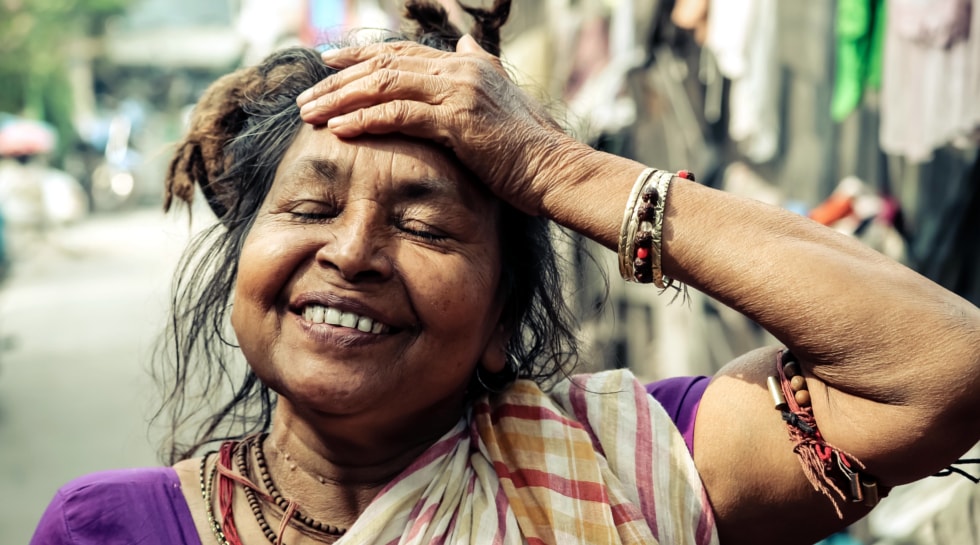
An Indian friend made two suggestions to my wife and me about mental preparation for traveling in India. The first was to read the novel A Fine Balance, by Indo-Canadian author Rohinton Mistry. The book is beautifully written and full of riotous and sympathetic characters. Even now, when I think of some of them, I feel I must have actually known them personally. One of them – Ravi – had no legs; he poled himself along on a big skateboard.
I actually encountered just such a person while I was there – a dead-ringer for Ravi, complete with skateboard, poles and wide grin. I couldn’t believe my eyes. My understanding of the book’s title is that life in India is ‘a fine balance’ between light and dark, joy and pain, laughter and tears. I’ve never known a place where everyone – young and old – seems to understand and embrace that truth.
You seldom hear a complaint there, but you hear laughter all the time, often mixed with your own.
Our friend’s second suggestion was to understand that in India, “anything goes.” Many times someone will comment that life in India is “organised chaos”, but usually adds with a wink, “But somehow, it works!” That was our experience; India is unpredictable, but endlessly fascinating. India is, shall we say, predictably unpredictable. You do need to be on your toes, all the time.
Our main reason for visiting India was to volunteer at a Christian Hospital in Robersganj, 300 km east of Delhi. Our first stop in India was Cochin, a small city in the southern state of Kerala. From there, we decided to take Indian Railways (IR) up the west coast, stopping for a few days in the former Portuguese colony, Goa, on the Arabian Sea.
To me, Goa conjures up visions of Sinbad the Sailor, daring voyages, mystery, treasure, pirates, mermaids, sword-play, romance, bird-people ….
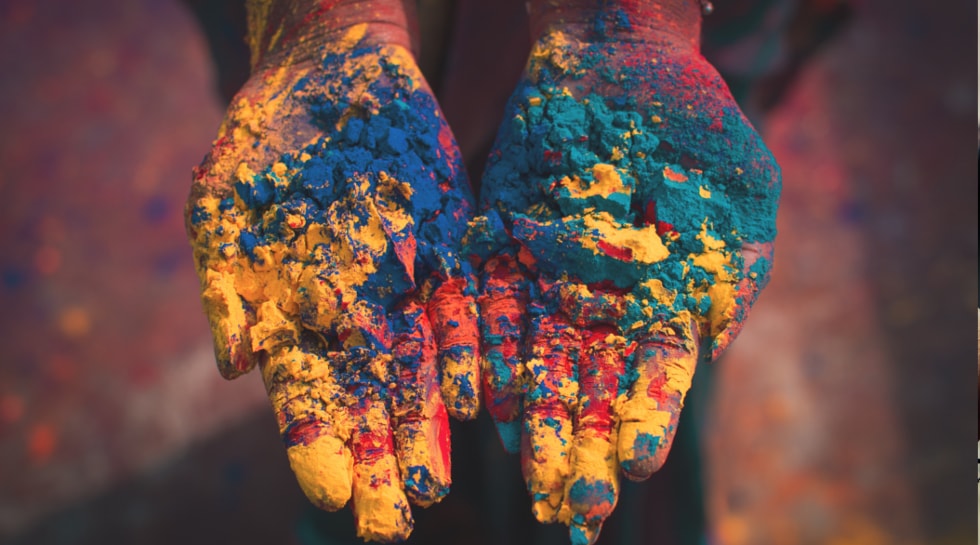
By way of background, Indian Railways employs 1.4 M people and operates 10,000 locomotives on 115,000 km of track, and has over 7000 stations. It transports a mind-boggling 8.4 B passengers a year – 22M a day. Its motto is, “Lifeline of the Nation”. No arguing with that.
Now riding on Indian Rail is a rich experience in itself – full of the “anything goes” spirit. We were advised to travel “2nd Class A/C” , the best combination of economy and comfort. We were issued bedding as we took our seats – seats that converted to sleeping berths. Some of the sheets were stained with what I presumed to be curry. The A/C produced torrents of arctic air, which was, strangely enough, perfectly comfortable, under the circumstances.
The first evening a tall, turbaned waiter gently pulled back our curtain and asked what we’d like to eat. In India answering this question calls for a measure of caution. One mustn’t be hasty. We ordered from a tattered menu; I felt we were being asked what species of bacterial food-poisoning we’d prefer… I ordered a “vegetable cutlet”, generally a safe bet, wherever you go.
In due course, our waiter delivered my cutlet. My eyebrows shot up; it was presented on a sheet of The Times of India. Moreover, the printer’s ink had smudged onto my cutlet, rendering it a nasty dark color. Nevertheless, I was starved, so I held my breath and chowed-down. I’m happy to report that the cutlet was delicious, and I suffered no ill-effect thereafter. The ink in the TOI is very black, but evidently not toxic; I’m guessing it’s vegetable-based, and may even contain a vitamin or two.
Soon it was time for bed. I had an upper berth – which accentuated the pitching and rolling of the train over the worn rails and rattly fasteners.

One frequently hears of railway disasters in India; but there’s no sense in dwelling on that sort of thing when you’re well-fed, pleasantly tucked-in, and hurtling through the night, somewhere in the wilds of Karnataka – where tigers, elephants and leopards roam, just outside our window.
The thing I was most grateful for that night was the tiny brass reading light at the head of my bed – a very civilized touch. I remember the book I was reading: The Great Railway Bazaar by Paul Theroux, a glorious, hilarious account of the author’s train journey across Asia in the seventies. This was my idea of a good time: to be there, doing that, at that moment.
The first night passed seemingly without incident. I later learned, however, that the train had stopped for four hours during the night in order to clear a burnt-out train-wreck from the track ahead. Train wrecks and derailments are common in India, often a monthly occurrence; sometimes trains are burned by religious extremists. Anything goes, all the time.
The first thing I heard in the morning was a man shouting, “Chai” every few seconds. This was our chai-wallah. He was selling the wonderful stuff for three rupees (9 cents) a cup. I marveled at how he was able to pour tea properly in the darkened railcar: he held the cup with his right thumb and forefinger, thumb inside the rim. He poured just enough chai to come up to the level of the tip of his thumb. I asked for some; I was able to see he had an exceptionally clean thumbnail. The chai was terrific.
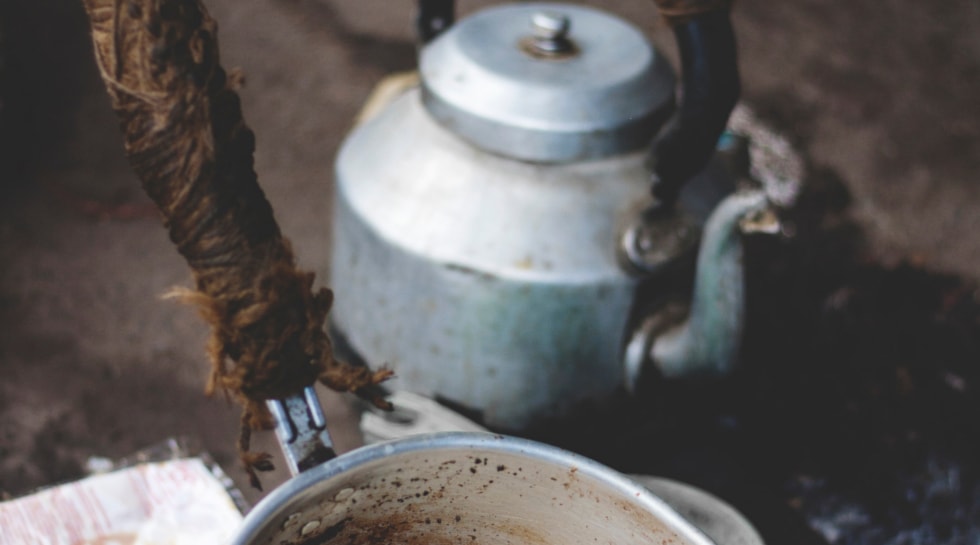
Another curious line of inquiry: train toilets. There were two close to us – one “Indian”, the other “Western”; we used the latter. Our toilet was distinguished by a leaky pipe that shot a steady stream of icy water onto whoever used it. If you stood, it got you in your belly. If you sat, you got it on the back of your neck. This was a tiresome set-up, so we tied a plastic bag around the pipe, a kind of plumbing “first-aid”. It made a reasonable improvement. The sewage, incidentally, is discharged right onto the tracks. Efforts are being made to introduce spiffy ‘bio-toilets’ because, as one official noted with a straight face, “faecal matter corrodes the tracks.” No surprise there.
Every so often a serious, uniformed IR man would board the train with a brass tank on his back, and a spray wand in one hand. The other hand held a big ledger. His job was to see to it that toilets were kept to IR’s rigorous theoretical standard. He’d open the door of each loo and vaguely waft in a puff of spray. Then, as if to say, “That’ll do”, he entered details of his work into his ledger with a fountain pen. His superiors must find his reports riveting.
Over the next few weeks, we rode the rails to Delhi, Robersganj, Varanasi, and then up to Rajasthan – about 5000 km in all.
This journey on Indian Railways stands out in my mind as one of the richest, most interesting experiences I’ve ever had – by turns colorful, exciting, heart-warming and amusing.
I adored our time on the train; every time I think of it, I smile. Try it yourself if you get the chance.


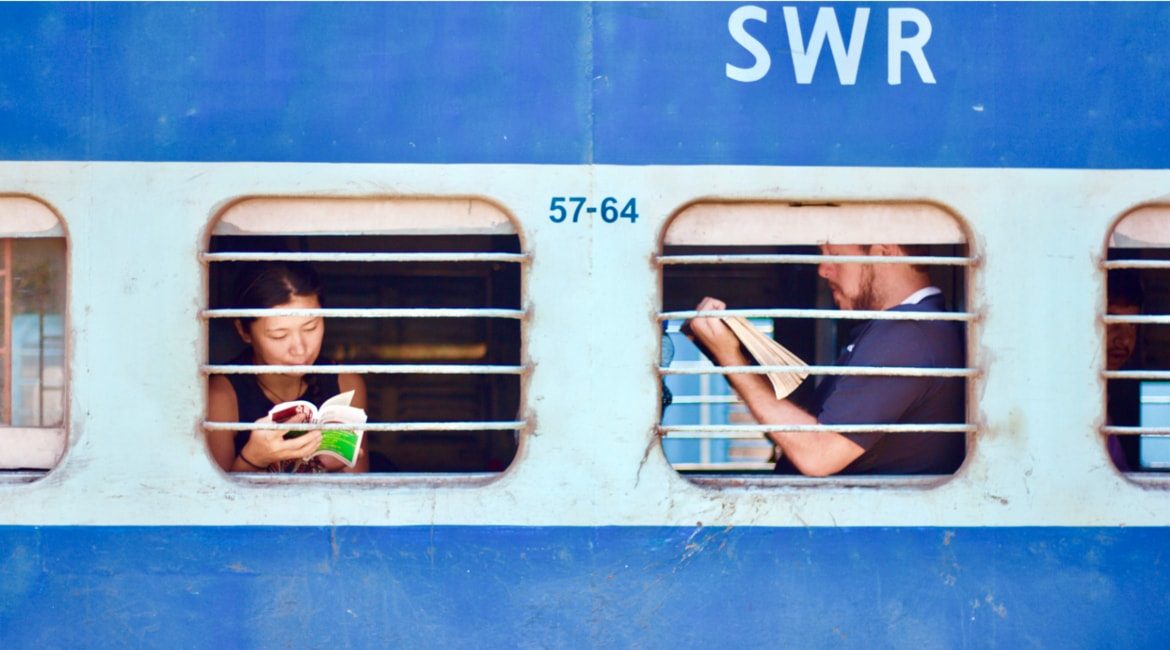
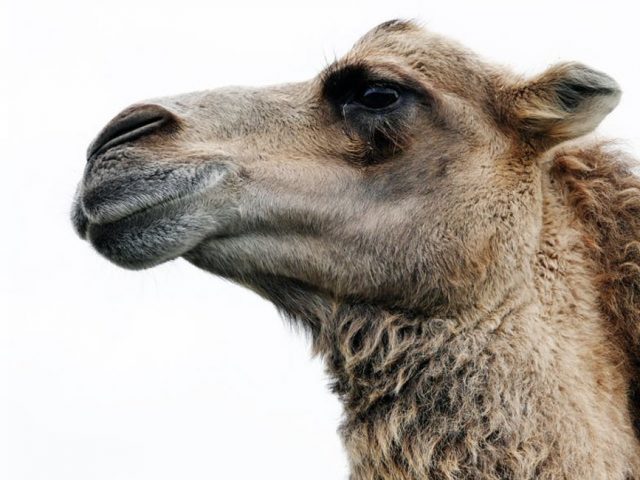
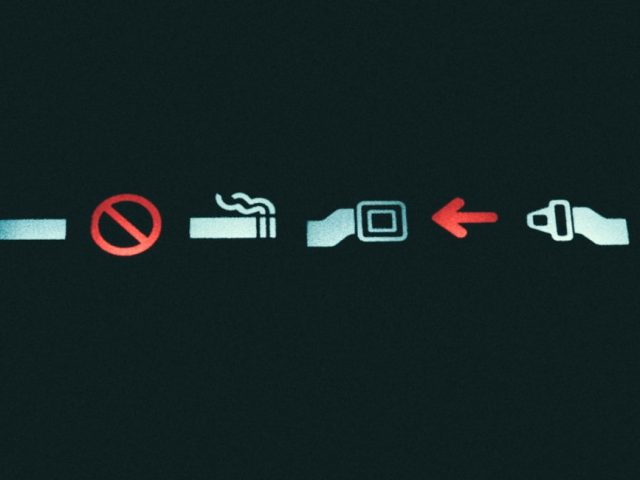

Facebook Comments